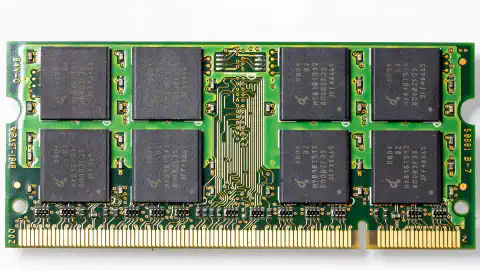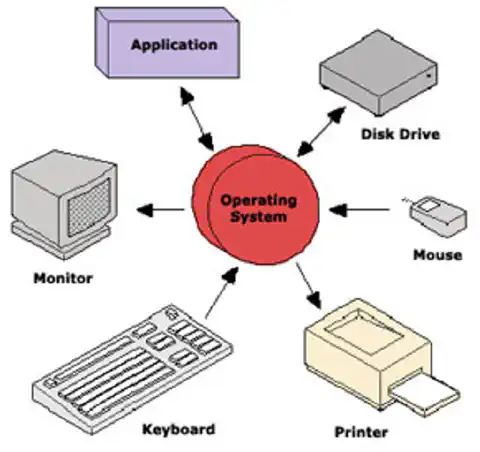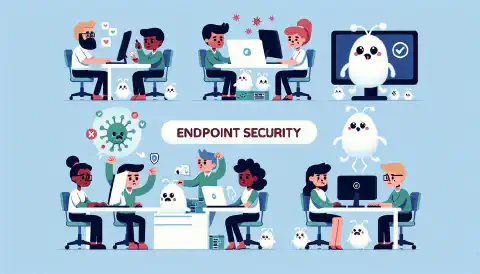Safeguarding Controlled Unclassified Information: Protecting Sensitive Data

Table of Contents
Which of the Following Is Not an Example of CUI?
Controlled Unclassified Information (CUI) refers to sensitive information that is not classified but requires protection to prevent unauthorized access, disclosure, or misuse. Understanding the concept of CUI is essential for individuals and organizations that deal with sensitive information regularly. In this article, we will explore the definition and importance of CUI, the different categories of CUI, common examples of CUI, non-examples of CUI, and the protection and handling of CUI.## Understanding the Concept of Controlled Unclassified Information (CUI)
Definition and Importance of CUI
Controlled Unclassified Information (CUI) is any information that requires safeguarding due to its sensitivity but does not meet the criteria for classification as classified information. It includes a broad range of information, such as proprietary business information, personal identifying information (PII), law enforcement sensitive information, and more.
Protecting CUI is crucial to maintain the confidentiality, integrity, and availability of sensitive information. Unauthorized access or disclosure of CUI can have severe consequences, including financial loss, reputational damage, or compromise of national security.
Ensuring the protection of CUI involves implementing robust security measures, such as access controls, encryption, and monitoring systems. Organizations must also establish comprehensive policies and procedures to govern the handling and sharing of CUI, including training programs to educate employees on the importance of safeguarding sensitive information.
Furthermore, organizations should regularly assess and update their security practices to stay ahead of evolving threats and vulnerabilities. This includes conducting risk assessments, implementing security awareness programs, and staying informed about emerging technologies and best practices in information security.
The History and Evolution of CUI
The concept of CUI has evolved over time in response to the increasing need to protect sensitive but unclassified information. The Controlled Unclassified Information program was established in 2010 by the U.S. government to standardize the handling and protection of sensitive information. It aimed to address inconsistencies in the handling of CUI across various federal agencies.
Prior to the establishment of the CUI program, different agencies had different policies and procedures for safeguarding sensitive but unclassified information. This lack of consistency created challenges in information sharing and collaboration, as well as increased the risk of unauthorized disclosure.
The CUI program provides clear guidelines and requirements for the safeguarding, sharing, and dissemination of CUI, ensuring that it is protected appropriately throughout its life cycle. It establishes a common framework for classifying, marking, handling, and decontrolling CUI, enabling better coordination and collaboration between government agencies and their partners.
Since its inception, the CUI program has undergone several updates and refinements to address emerging threats and technological advancements. It continues to evolve to meet the changing landscape of information security and ensure the protection of sensitive but unclassified information.
As technology advances and the volume of information grows, the challenges associated with protecting CUI become more complex. Organizations must stay vigilant and adapt their security measures to mitigate risks effectively. This includes leveraging advanced technologies such as artificial intelligence and machine learning to detect and respond to potential threats in real-time.
Furthermore, collaboration and information sharing between government agencies, industry partners, and international counterparts play a crucial role in enhancing the protection of CUI. By sharing best practices, lessons learned, and threat intelligence, organizations can collectively strengthen their defenses and mitigate the risks associated with sensitive but unclassified information.
Different Categories of Controlled Unclassified Information
Controlled Unclassified Information (CUI) is a term used to describe information that requires safeguarding in order to protect the privacy, confidentiality, or integrity of individuals or organizations. There are various categories of CUI, each with its own specific characteristics and handling requirements.
CUI Basic
CUI Basic is a category that includes sensitive but unclassified information that is not covered by any other specific CUI category. It refers to information that requires safeguarding to ensure the protection of individuals or organizations. This category encompasses a wide range of data, including personally identifiable information (PII) and sensitive financial data.
Personally identifiable information (PII) refers to any information that can be used to identify an individual, such as their name, address, social security number, or financial information. Safeguarding PII is crucial to prevent identity theft, fraud, or any other misuse of personal information.
Sensitive financial data includes any information related to financial transactions, account numbers, credit card information, or banking details. Protecting sensitive financial data is essential to prevent unauthorized access, financial fraud, or any other form of financial exploitation.
CUI Specified
CUI Specified is another category of controlled unclassified information that has been designated as requiring protection and has specific handling requirements. This category encompasses a wide range of sensitive information that is critical to national security and other important areas.
Controlled technical information refers to technical data or information that is subject to export control laws and regulations. This can include information related to defense articles, military technology, or other sensitive technological developments. Protecting controlled technical information is vital to prevent unauthorized access or transfer of sensitive technology to unauthorized individuals or entities.
Export-controlled information refers to any information that is subject to export control laws and regulations, which are designed to protect national security and prevent the unauthorized transfer of sensitive information or technology to foreign entities. This category includes information related to defense articles, dual-use technology, or any other sensitive information subject to export control regulations.
Critical infrastructure information refers to any information related to critical infrastructure systems, such as power plants, transportation systems, or communication networks. Protecting critical infrastructure information is crucial to prevent potential threats or attacks that could disrupt essential services and pose a risk to national security.
Overall, understanding the different categories of controlled unclassified information is essential for organizations and individuals who handle sensitive data. By identifying and properly safeguarding these categories, the privacy, confidentiality, and integrity of individuals and organizations can be effectively protected.
Common Examples of Controlled Unclassified Information (CUI)
Controlled Unclassified Information (CUI) encompasses a wide range of sensitive information that requires protection due to its potential impact on national security, privacy, or business interests. Let’s explore some common examples of CUI:
Personal Identifying Information (PII)
Personal Identifying Information (PII) is a type of CUI that includes any information that can be used to identify an individual. This may include names, addresses, social security numbers, or other personally identifiable data. Safeguarding PII is critical to prevent identity theft, fraud, or unauthorized access to personal information.
In today’s digital age, the protection of PII has become increasingly important. Cybercriminals are constantly seeking to exploit vulnerabilities in systems to gain access to PII for malicious purposes. Organizations must implement robust security measures, such as encryption, access controls, and regular security audits, to ensure the confidentiality and integrity of PII.
Furthermore, with the rise of social media and online platforms, individuals must also be cautious about sharing their PII. It is crucial to be mindful of the information shared online and to only provide sensitive personal details when necessary and to trusted sources.
Law Enforcement Sensitive Information
Law Enforcement Sensitive Information refers to sensitive information that, if disclosed, could potentially compromise ongoing law enforcement activities or investigations. This may include details about ongoing operations, intelligence sources, or sensitive techniques used by law enforcement agencies. Protecting this information is crucial to ensure the effective operation of law enforcement organizations and to maintain public safety.
The nature of law enforcement work often involves dealing with sensitive and confidential information. This can range from undercover operations to intelligence gathering on criminal organizations. The unauthorized disclosure of such information can not only jeopardize ongoing investigations but also put the lives of law enforcement personnel and informants at risk.
To safeguard law enforcement sensitive information, agencies employ strict access controls, encryption, and other security measures. Additionally, personnel undergo rigorous training on the proper handling and protection of sensitive information to minimize the risk of unauthorized disclosure.
Proprietary Business Information
Proprietary Business Information is another example of CUI, referring to sensitive information owned by businesses that provides them with a competitive advantage. This may include trade secrets, intellectual property, or confidential business strategies. Safeguarding proprietary business information is essential to protect a company’s economic interests and maintain its market position.
In today’s highly competitive business landscape, companies invest significant resources in research and development to gain a competitive edge. Proprietary business information, such as trade secrets or innovative technologies, can be the lifeblood of a company’s success. Therefore, protecting this information from unauthorized access or disclosure is of utmost importance.
Businesses employ various measures to safeguard proprietary information, including non-disclosure agreements, physical security controls, and digital rights management systems. Additionally, employee training and awareness programs are crucial to educate personnel about the importance of protecting proprietary information and the potential consequences of its compromise.
As we can see, controlled unclassified information (CUI) encompasses a wide range of sensitive data that requires careful handling and protection. Whether it is personal identifying information, law enforcement sensitive information, or proprietary business information, organizations and individuals must prioritize the implementation of robust security measures to safeguard against unauthorized access, disclosure, and potential harm.
Non-Examples of Controlled Unclassified Information
Publicly Available Information
Publicly Available Information refers to information that is freely accessible and not subject to any restrictions on dissemination or use. This includes information that is widely available to the public through public websites, published books, or other publicly accessible sources.
For example, think about the vast amount of information you can find on the internet. From news articles to research papers, blogs to social media posts, the internet is a treasure trove of publicly available information. Whether you are looking for historical facts, scientific data, or entertainment news, you can easily find it with a simple search.
Furthermore, published books are another great source of publicly available information. Libraries and bookstores are filled with books covering a wide range of topics, from fiction to non-fiction, from self-help to academic textbooks. These books provide valuable knowledge and insights to anyone who seeks them.
Additionally, public websites play a significant role in making information accessible to the general public. Government websites, educational institutions’ websites, and various organizations’ websites provide a wealth of information on topics such as laws and regulations, educational resources, research findings, and more. Accessible to anyone with an internet connection, these websites serve as valuable sources of publicly available information.
Classified Information
Classified Information, unlike CUI, refers to sensitive information that has been assigned a specific classification level (such as Confidential, Secret, or Top Secret) based on its potential impact to national security. Classified information is subject to stricter access controls and handling procedures compared to CUI.
Classified information encompasses a wide range of data that requires protection due to its potential to harm national security if accessed or disclosed by unauthorized individuals. This includes information related to military operations, intelligence gathering methods, diplomatic negotiations, and sensitive technological advancements.
For instance, classified information may include detailed plans for military operations, including troop movements, strategic objectives, and tactical maneuvers. Such information must be kept confidential to ensure the success and safety of military personnel involved.
Similarly, intelligence agencies gather classified information to protect national security interests. This may involve collecting and analyzing data on potential threats, both domestic and international, to provide crucial insights to decision-makers. The sensitive nature of this information necessitates strict access controls and safeguards to prevent unauthorized disclosure.
Moreover, classified information is also present in diplomatic communications. Sensitive negotiations between countries, discussions on international agreements, and diplomatic strategies are all examples of information that would be classified to protect the interests and security of the involved nations.
Lastly, classified information can pertain to technological advancements that have potential military applications. Research and development projects related to advanced weaponry, encryption methods, or surveillance technologies fall under this category. Safeguarding such information ensures that adversaries do not gain access to critical knowledge that could undermine national security.
The Protection and Handling of CUI
Guidelines for Safeguarding CUI
The protection of CUI requires adherence to specific guidelines and practices to ensure its confidentiality, integrity, and availability. Some key measures include implementing access controls, data encryption, secure storage, and training employees on the proper handling of CUI. Regular audits and assessments are essential to identify and address any vulnerabilities or gaps in the protection of CUI.
Consequences of Mishandling CUI
Mishandling CUI can have severe consequences, both for individuals and organizations. Depending on the nature and extent of the mishandling, potential consequences may include legal actions, financial penalties, loss of reputation, or loss of business opportunities. It is crucial for individuals and organizations to take the protection and handling of CUI seriously to avoid these negative outcomes.
Conclusion
In conclusion, understanding the concept of Controlled Unclassified Information (CUI) is vital for individuals and organizations that deal with sensitive information. By recognizing the different categories of CUI, common examples of CUI, and non-examples of CUI, we can effectively protect and handle CUI to prevent unauthorized access, disclosure, or misuse. Following the guidelines for safeguarding CUI and understanding the consequences of mishandling CUI are crucial steps in maintaining the confidentiality, integrity, and availability of sensitive information.





